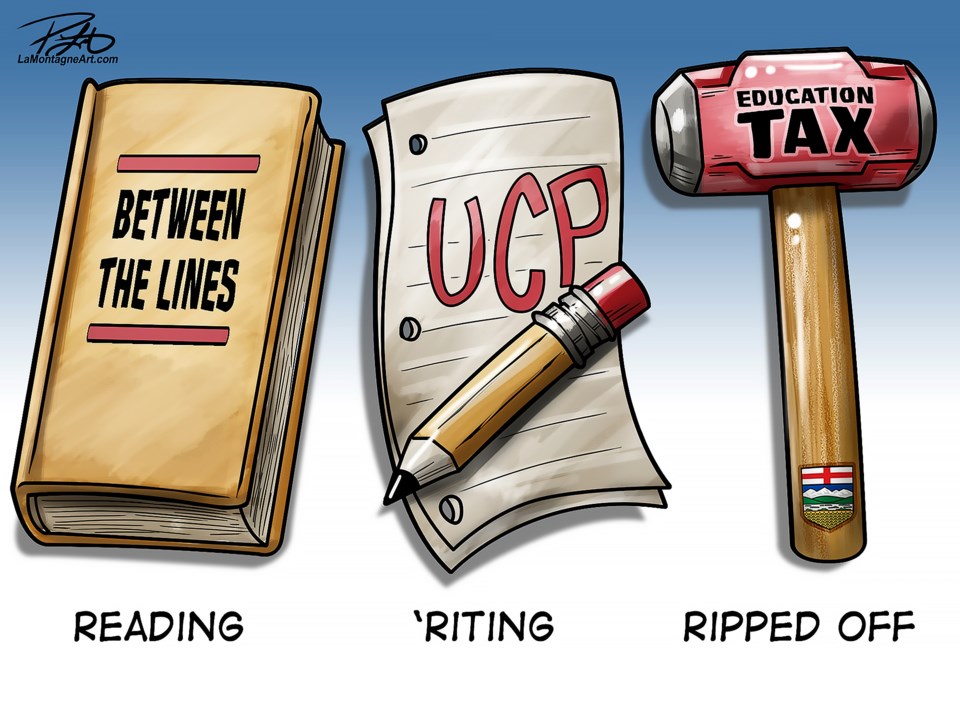The province’s education tax is a necessary source of income for Alberta schools and students.
But the method of collection and way of divvying out its revenue is a less than perfect model. Though a new system is not needed, tweaks to the formula and process should be examined.
In the current system, the Bow Valley is significantly impacted more than other municipalities in the province.
With the amount levied on each municipality determined by property assessments, it means certain areas are more affected than others.
The Bow Valley happens to draw the short straw on collection due to significantly rising assessed property values.
Of the seven most impacted municipalities that aren’t a summer village, townsite or village, four area municipalities were of the highest percentage increases.
The MD of Bighorn, Town of Banff, Town of Canmore and Improvement District No. 9 saw increases between 17 and 25 per cent from 2023 to 2024.
For Banff, Bighorn and Canmore, it makes up between 30 and 45 per cent of overall property taxes collected. In total, those three will send about $44.15 million to Edmonton to help fund Alberta schools.
In comparison, Canadian Rockies Public Schools – the lone school division solely based in the Bow Valley – has a $37.5 million budget for 2024-25. That budget isn’t solely offset by the province since only $23.11 million is projected to come from the Alberta government.
It means valley taxpayers are helping other areas of Alberta when it comes to aspects of provincial education funding. For almost every $2 sent up to Edmonton, roughly $1 is being returned for local needs.
The way the education tax is collected often causes confusion with anyone receiving a property tax bill.
Collected by municipalities – who do so on behalf of the province – many property taxpayers are likely to think it’s coming from local government.
With it mostly being a single line on a property tax bill, few people are likely to differentiate between who’s actually levying the tax.
A municipality is under the jurisdiction of the province and its collection of the education tax is designed to streamline the process rather than a property owner getting separate bills.
Of course, the system is far from new. It’s one that’s been used for more than 100 years. The process – which is used throughout Canada – has provincial governments collect education funding from every municipality and then shared across its jurisdiction to improve and maintain education in every corner that has schools.
The education tax isn’t the end-all-be-all when it comes to funding school needs in Alberta.
The education tax covers about 30 per cent of the education ministry’s $9.3 billion budget in 2024-25. With education a high importance in any provincial portfolio, the tax is crucial in keeping education coffers stocked with revenue for school infrastructure, programming and staffing.
Its intent is to share the wealth equally to support different jurisdictions for education. If someone were to leave the valley for a northern Alberta community, they’d likely go from feeling like a donor to beneficiary in terms of education taxation.
Funding for education is one of the most important roles a provincial government has, but a tweak to the system by way of a percentage cap should be examined.
For taxpayers in Banff, Canmore, Lake Louise, MD of Bighorn and Kananaskis Improvement District to offset costs elsewhere creates a system that punishes people for living in a highly sought after area to reside since property assessments are only likely to continue to increase.
Better factoring population growth with property assessments or establishing a cap on the percentage increase a municipality can incur each year could create a minor improvement for certain taxpayers across the province. It could aid in lessening the impact felt by some municipalities and keep in place a system that spreads resources to all jurisdictions.
It’s not necessarily reinventing the wheel, but creating a slightly fairer process.




